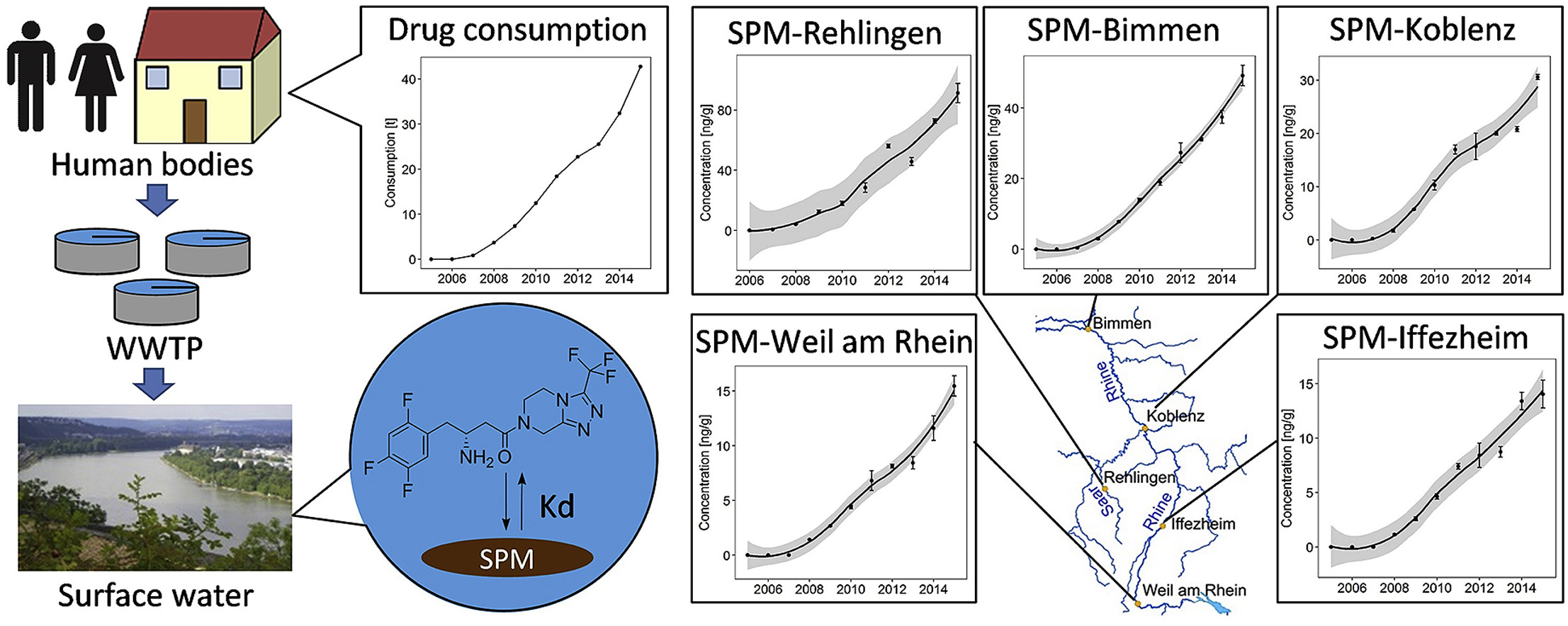Spatial distribution and temporal trends of pharmaceuticals sorbed to suspended particulate matter of German rivers
Boulard, Lise; Dierkes, Georg; Schlüsener, Michael P.; Wick, Arne; Koschorreck, Jan; Ternes, Thomas A.
Water Research (2020), 171, 15 March, 115366; online 16 December 2019
Abstract
Although several studies confirmed a wide distribution of pharmaceuticals in rivers and streams, a limited knowledge is available about the partitioning of pharmaceuticals between the water phase and suspended particulate matter (SPM). To close this gap of knowledge, we developed and validated a sensitive and high throughput analytical method for the analysis of 57 pharmaceuticals, 42 metabolites and transformation products (TP) as well as the artificial sweetener acesulfame sorbed to SPM. The method was based on pressurized liquid extraction (PLE) followed by a clean-up via solvent exchange and detection via direct injection-reversed phase LC-MS/MS and freeze-drying-HILIC-MS/MS. Freundlich isotherms were determined for 90 analytes. All showed a linear sorption behavior. Distribution coefficients (Kd) ranged from 0.64 L/kg to 9300 L/kg. For 18 pharmaceuticals, Kd values were found to be above 100 L/kg. SPM of annual composite samples were analyzed to determine the pharmaceutical concentrations between 2005 and 2015 at four sites of the river Rhine: Weil, Iffezheim, Koblenz and Bimmen as well as between 2006 and 2015 at one site of the river Saar, at Rehlingen. In these SPM samples, up to 61 of the 100 analytes were detected with concentrations up to 190 ng/g d.w. (dry weight) for guanylurea, a transformation product of the antidiabetic metformin. For most analytes, increasing concentrations were found along the length of the Rhine and higher concentrations were measured in Rehlingen/Saar. Normalization of the data with the antiepileptic drug carbamazepine as an intrinsic tracer for municipal wastewater indicated possible industrial discharges for four analytes. For most pharmaceuticals, the annual concentrations exhibited a good correlation with the consumption volumes in Germany.
doi: 10.1016/j.watres.2019.115366
